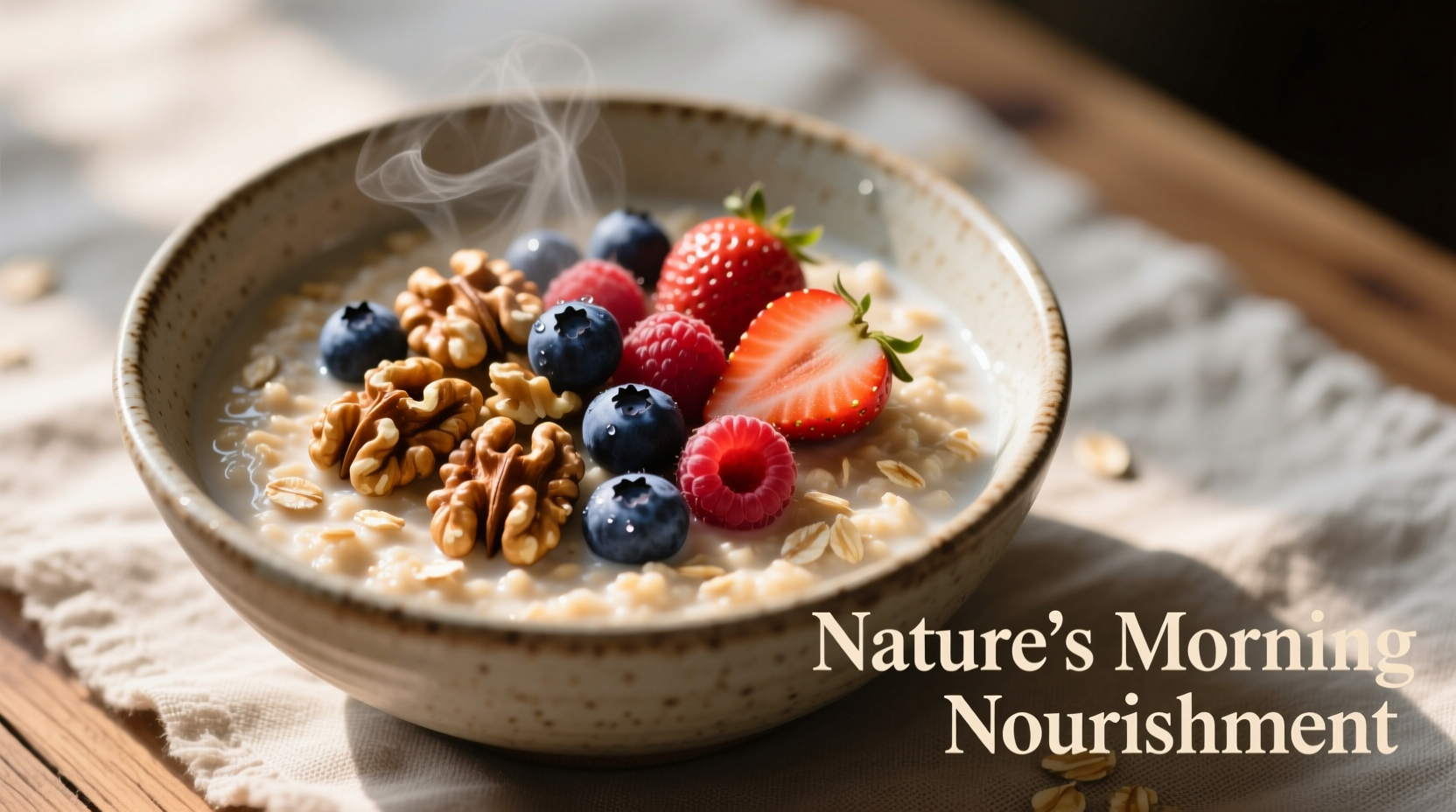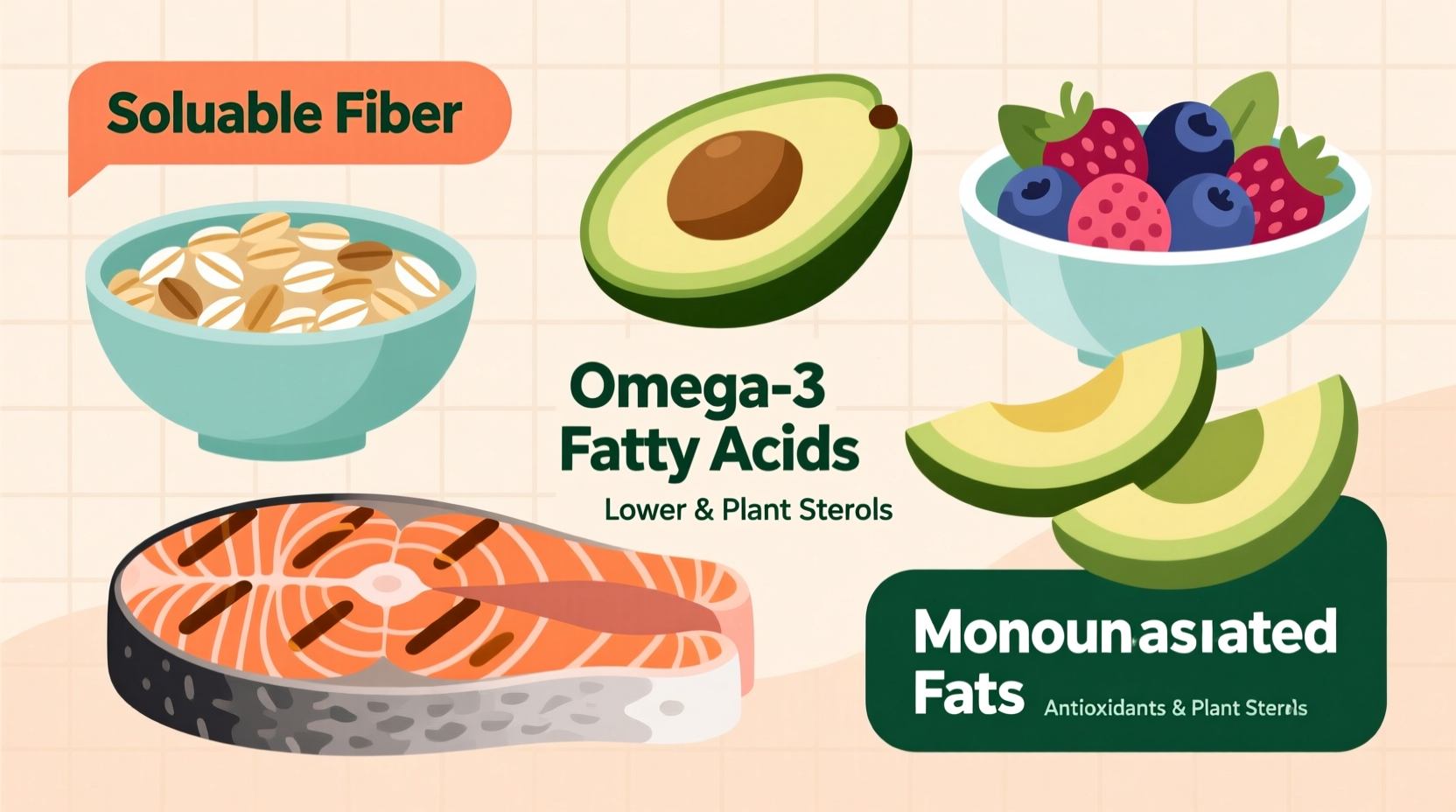Based on clinical research from the American Heart Association and National Institutes of Health, the top evidence-backed foods for lowering LDL ("bad") cholesterol include oats and barley (rich in soluble fiber), fatty fish like salmon (high in omega-3s), walnuts and almonds, olive oil, and legumes like beans and lentils. Consuming these foods regularly as part of a balanced diet can reduce LDL cholesterol by 5-15% within weeks.
Managing cholesterol through diet isn't about quick fixes—it's about making sustainable changes backed by decades of nutritional science. When your doctor mentions "high cholesterol," they're typically referring to elevated LDL levels that increase cardiovascular risk. The good news? Your food choices directly impact these numbers. Unlike medications that treat symptoms, dietary adjustments address the root causes of cholesterol imbalance while providing additional health benefits.
Why Food Choices Matter for Cholesterol Control
Cholesterol management often begins with understanding how different nutrients affect your lipid profile. While saturated and trans fats raise LDL cholesterol, specific food components actively lower it:
- Soluble fiber binds to cholesterol in digestion and removes it from your body
- Omega-3 fatty acids reduce triglycerides and inflammation
- Plant sterols block cholesterol absorption in the gut
- Monounsaturated fats replace harmful fats while maintaining HDL ("good") cholesterol
These mechanisms work synergistically when you incorporate cholesterol-lowering foods into your regular eating pattern. The Mediterranean diet, consistently ranked #1 for heart health by U.S. News & World Report, demonstrates how these elements combine for maximum benefit.
Evidence-Backed Cholesterol Fighters: What Science Says
| Food Category | Key Compounds | LDL Reduction | Minimum Effective Dose | Timeframe for Results |
|---|---|---|---|---|
| Oats & Barley | Soluble fiber (beta-glucan) | 5-7% | 3g daily | 4-6 weeks |
| Fatty Fish | Omega-3 (EPA/DHA) | Triglycerides ↓ 15-25% | 2 servings/week | 8-12 weeks |
| Nuts (Walnuts, Almonds) | Monounsaturated fats, fiber | 5-10% | 1.5 oz daily | 6-12 weeks |
| Olive Oil | Oleic acid, polyphenols | 8-10% | 2 tbsp daily | 3-6 months |
| Legumes | Soluble fiber, plant protein | 5% | 1/2 cup daily | 6-8 weeks |
This comparison, based on meta-analyses published in the American Journal of Clinical Nutrition, shows how different food categories deliver measurable cholesterol benefits. Note that results vary based on individual metabolism and overall dietary patterns—these foods work best as part of a comprehensive approach.
Your Practical Implementation Guide
Breakfast Boosters
Start your day with an evidence-based cholesterol-lowering foundation. Instead of sugary cereals, choose steel-cut oats cooked with chia seeds and topped with walnuts. The soluble fiber in oats binds to cholesterol in your digestive tract, while walnuts provide omega-3s that reduce inflammation. Research from Harvard's T.H. Chan School of Public Health shows this combination lowers LDL more effectively than either component alone.

Lunch & Dinner Transformations
Replace saturated fats with heart-healthy alternatives using these chef-tested techniques:
- Fish preparation: Bake salmon with lemon and herbs instead of frying. The American Heart Association recommends baking or grilling to preserve omega-3 content
- Olive oil substitution: Use extra virgin olive oil in salad dressings instead of creamy options. A study in Nutrients journal found this simple swap reduced LDL by 8.5% in 3 months
- Bean integration: Add lentils to soups and stews—they blend seamlessly while boosting soluble fiber content
Smart Snacking Strategies
Handfuls of almonds or walnuts make ideal cholesterol-lowering snacks. The FDA recognizes that consuming 1.5 ounces daily of nuts like walnuts may reduce heart disease risk. Keep portion-controlled packs handy to avoid overeating—while nuts are healthy, they're calorie-dense.
Context Matters: When Diet Alone Isn't Enough
Dietary changes produce significant results for many people, but certain situations require additional approaches. Understanding these boundaries helps set realistic expectations:
- Genetic factors: Familial hypercholesterolemia affects 1 in 250 people and typically requires medication alongside diet
- Existing conditions: Those with diabetes or established heart disease often need more aggressive management
- Medication interactions: Some cholesterol medications work better with specific dietary patterns
The National Lipid Association emphasizes that while food choices significantly impact cholesterol levels, they're part of a complete strategy that may include exercise, weight management, and medication when necessary. Always consult your healthcare provider before making significant dietary changes, especially if you're on cholesterol-lowering medication.
A Sample Day of Cholesterol-Lowering Eating
Implementing these foods doesn't require complicated recipes. Here's a practical day of eating based on Mayo Clinic recommendations:
- Breakfast: Oatmeal with sliced banana and 1 tbsp chia seeds (soluble fiber boost)
- Snack: Small apple with 12 almonds (fiber + healthy fats)
- Lunch: Lentil soup with whole grain bread and side salad with olive oil dressing
- Snack: Half avocado sprinkled with lemon juice
- Dinner: Baked salmon with roasted Brussels sprouts and quinoa
- Dessert: Mixed berries with a dollop of Greek yogurt
This pattern delivers 25-30g of fiber daily—well above the average American intake—while providing optimal omega-3s and plant sterols. Research published in the Journal of the American College of Cardiology shows this type of eating pattern reduces cardiovascular events by 30% compared to standard Western diets.
Foods to Limit for Better Cholesterol Management
While adding beneficial foods is crucial, reducing certain items creates space for healthier choices:
- Processed meats: Bacon, sausages, and deli meats contain saturated fats and sodium that raise LDL
- Fried foods: Deep-fried items often contain trans fats that significantly increase heart disease risk
- Refined carbohydrates: White bread, pastries, and sugary cereals can lower HDL while raising triglycerides
The key isn't elimination but strategic reduction. Replace one processed item at a time with a cholesterol-friendly alternative—your taste preferences will adapt within weeks.
Making Sustainable Changes That Last
Successful cholesterol management through diet isn't about perfection—it's about consistent progress. Start with one change that fits your lifestyle, like swapping butter for olive oil in cooking. Track your meals for one week using a free app to identify easy improvement opportunities. Remember that small, sustainable changes create lasting results where drastic overhauls often fail.
Consult the American Heart Association's fat recommendations for detailed guidance on implementing these changes. Their evidence-based approach has helped millions improve their heart health through practical dietary adjustments.
Frequently Asked Questions
How quickly can diet changes lower cholesterol?
Most people see measurable improvements in LDL cholesterol within 4-12 weeks of consistent dietary changes. Soluble fiber from oats typically shows effects in 4-6 weeks, while omega-3 rich foods like fatty fish may take 8-12 weeks. The National Institutes of Health notes that combining multiple cholesterol-lowering foods produces faster results than focusing on just one.
Can I eat eggs if I have high cholesterol?
Current research indicates most people can safely consume 1-2 whole eggs daily without significantly impacting cholesterol levels. The Dietary Guidelines Advisory Committee removed previous cholesterol limits because studies show dietary cholesterol has less impact on blood cholesterol than saturated fats. However, those with diabetes or genetic cholesterol disorders may need to limit egg yolks—consult your healthcare provider for personalized advice.
Do cholesterol-lowering foods work for everyone?
While most people benefit from cholesterol-lowering foods, individual responses vary due to genetics and existing health conditions. Approximately 25% of the population are "hyper-responders" who experience greater cholesterol changes from dietary modifications. Those with familial hypercholesterolemia typically require medication alongside diet. The American Heart Association recommends getting a lipid panel before and after dietary changes to measure your personal response.
How much soluble fiber do I need daily for cholesterol benefits?
The FDA recommends consuming at least 3 grams of soluble fiber daily from oats, barley, or psyllium to achieve cholesterol-lowering benefits. This amount typically reduces LDL by 5-7%. Most Americans consume only 15 grams of total fiber daily, well below the recommended 25-30 grams. Gradually increase your fiber intake while drinking plenty of water to avoid digestive discomfort.











 浙公网安备
33010002000092号
浙公网安备
33010002000092号 浙B2-20120091-4
浙B2-20120091-4